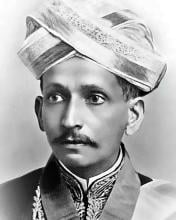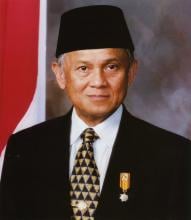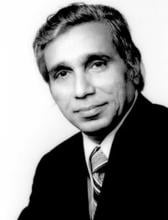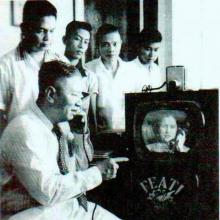Technology
News

02 Nov 2006
The project aims to develop innovative alternative technologies that utilize pollution-free solar light energy as the most abundant, efficient and environmentally-harmonious energy resource. The TOSLEC-1, hosted jointly by Tokyo University of Science (TUS) and Nissan Science Foundation, was held at Tokyo University of Science.

01 Nov 2006
An unprecedented look at the prospects for science and technology in the Muslim world is offered in Nature's News section this week.

31 Oct 2006
A research group headed by Takashi Tsuji of the Tokyo University of Science's Tissue Engineering Research Center identified mechanisms behind outbreaks of adult T-cell leukemia.

31 Oct 2006
The research team from a joint research program of Tokyo University of Science (TUS)and the Japan Science and Technology Agency have succeeded in producing hydrogen from water through the use of gallium nitride (GaN) crystals for the first time.

20 Oct 2006
People around the world can access information about harmful introduced species easier than ever thanks to the September 2006 launch of a new website for the Global Invasive Species Database (GISD).
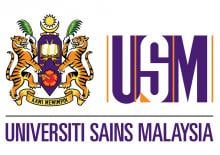
19 Oct 2006
This innovation offers versatility and is applicable on virtually all types of materials regardless of it nature or origin such as semi-metals like silicon, silicates, glasses, ceramics as well as non-metals like plastics, woods and shells.

18 Oct 2006
The Asia Pacific Conference on Plant Tissue Culture and Agribiotechnology (APaCPA) 2007 will be a comprehensive professional platform to promote research in all aspects of basic and applied biotechnology, especially in the areas of plant tissue culture and agribiotechnology.
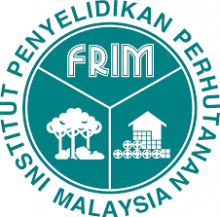
16 Oct 2006
Their expertise include Bamboo Management, Silviculture, Non-Wood Forest Produce Furniture, Mangrove, Forestry, Tissue Culture Horticulture, Seed Science, Microbiology Pharmaceutical, Drug Discovery, Natural Products Chemistry, Herbal Product Essential Oils, Wood Composite, Biomass Utilisation, Manufacturing Mechanisation and Automation

04 Oct 2006
The electronic nose is an array of gas sensors which measure the frequency changes of volatile vapors on its surfaces. The 'electronic tongue' consists of lipid polymer membrane electrodes (to mimic human tongue) for the analysis of liquid samples.

04 Oct 2006
The last thing most people want in their computer's memory is a virus. But now a team of scientists has used a virus to make a memory device, according to research in this month's Nature Nanotechnology.
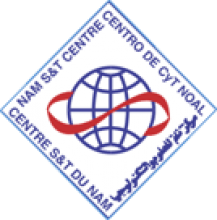
03 Oct 2006
International conference on S&T Policy Research and Statistics, International Roundtable on Lessons from Natural Disasters, Policy Issues and Mitigation Strategies, International Roundtable on Lightning Protection, International workshop on Medicinal Plants and Herbal Medicine

01 Oct 2006
Abstract submission deadline is October 15, 2006. The conference will be held at the Islamic University of Gaza (IUG) from 18-19 June 2007. It will focus on important engineering issues relevant to construction and development, which will stimulate construction efforts and development.

24 Sep 2006
MINT’s R&D projects include decontamination of Cosmetics, Agrochemicals for Tropical Agriculture, Hydrogel, Bone Allograft, Study of Pesticides in Vegetables, Breeding of New Varieties of Bananas, developing new Radiopharmaceuticals and many more

21 Sep 2006
Activities in the latest technologies in Cement Manufacture & Construction, Plant Tissue Culture, Herbal Medicine, Surface Engineering Technology, Wireless Technology & MEMS, Prediction of Monsoon, Science Centres & Museums, Pharmaceuticals & Neutraceuticals, Crop & Forage Production using Saline Waters in Dry Areas and Coastal Ecosystems

18 Sep 2006
A gene that enables rice to survive complete submergence has been identified by a team of researchers at the International Rice Research Institute (IRRI) in the Philippines and at the University of California's Davis and Riverside campuses.

17 Sep 2006
Being the world largest producer of palm oil, Malaysia generates a huge quantities of oil palm biomass. This research project aims to develop a technology to convert palm oil biomass to green fuel using supercritical water technology.

14 Sep 2006
The Arab countries are surrounded by countries with nuclear capabilities. Israel, Pakistan, India and, sooner or later, Iran. It is in this context that the GCC secretary-general issued a wake-up call to the "Arab Nation" to adopt a new regional strategy on the nuclear issue by abandoning the current zero nuclear option
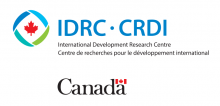
14 Sep 2006
The workshop, supported by AIT, IDRC, and Rockefeller Foundation, will examine existing policies on bio-innovations in the region, identify existing research gaps and recommend a strategy for information sharing, learning and partnering.

13 Sep 2006
Nature VOL.443. Summaries of newsworthy papers include Why summer heatwaves could be more common, Changes in the Sun’s luminosity are not responsible for climate change, How oxygen gangs up under pressure, Shaking a quantum bridge, Galaxy formation kicks off

07 Sep 2006
Delegates at TWAS 10th General Conference highlight the benefits of international collaboration for building scientific capacity.

07 Sep 2006
Malaysia's Deputy Minister of Science, Technology and Innovation describes the steps that his nation has taken to spur science-based sustainable growth.

07 Sep 2006
The first TWAS Regional Conference Young Scientists (RCYS), held in association with the 10th TWAS General Conference, has concluded in Angra dos Reis, south of Rio de Janeiro, Brazil.

07 Sep 2006
The TWAS Council announced the names of the eight scientists from developing countries who will receive the 2006 TWAS Prizes for their outstanding contributions to the advancement of sciences.

07 Sep 2006
The Group of 77 (G77) and Third World Network of Scientific Organizations (TWNSO) have announced the transformation of TWNSO into the Consortium of Science, Technology and Innovation for the South (COSTIS).

07 Sep 2006
Jacob Palis, a prominent Brazilian mathematician, has been elected president of TWAS, the Academy of Science for the Developing World. A new council has also been chosen.

06 Sep 2006
Wearing light solar-powered GPS satellite transmitters, wild swans from Mongolia are winging their way across Eurasia, while land-bound scientists tracking the birds’ journeys on computers say that these unique studies will shed light on how wild birds may be involved in the spread of avian influenza.

04 Sep 2006
Proceedings of the International Conference on Water Values and Rights held in Ramallah, Palestine. It contains 55 peer-reviewed papers regarding : Water Resources Management, Wastewater management, Water: Development, Strategic Planning and Regional Cooperation, and Water Rights and International Water law

29 Aug 2006
Some three million people die from water-related diseases each year. This research from the National Atomic Energy Commission (CNEA) in Argentina is beneficial to millions. On sunny days, the SOLWATER reactor is able to disinfect about 20 litres of water in four to six hours.

22 Aug 2006
Since the early 1990s, China has been investing in nanoscience and nanotechnology research. The article describes many advances made in nanotechnology by scientists in China, its global impact and the need to maintain standards.

14 Aug 2006
Researchers used this method to investigate in vivo the fate of various adult stem cells transplanted into the mouse ischemic brain. Results indicate that adult stem cells could be used as vehicles to introduce therapeutic genes into the central nervous system in an attempt to support brain recovery.
Researchers
Sorry, no researchers coming up for this topic.
- « first
- ‹ previous
- 1
- 2
- 3
- 4
Giants in history
Sir Mokshagundam Srinivasa Shastry Vishveshwarayya (15 September 1860 – 14 April 1962) is widely regarded as India’s most outstanding engineer. In a career that spanned almost his entire life, Vishveshwarayya played a pivotal role in several engineering projects, including designing the Krishnarajasagara dam that is still the source of irrigation and drinking water for parts of Karnataka today.
Physicist Narinder Singh Kapany (31 October 1926 – 4 December 2020) pioneered the use of optical fibres to transmit images, and founded several optical technology companies. Born in Punjab, India, he worked at a local optical instruments factory before moving to London for PhD studies at Imperial College. There, he devised a flexible fibrescope to convey images along bundles of glass fibres.
Bacharuddin Jusuf Habibie (25 June 1936 – 11 September 2019) was an Indonesian engineer who was President of Indonesia from 1998 to 1999.
A Japanese surgeon, Tetsuzo Akutsu (20 August 1922 – 9 August 2007) built the first artificial heart capable of keeping an animal alive.
Fazlur Rahman Khan (3 April 1929 – 27 March 1982) was a Bangladeshi-American structural engineer and architect who invented the tube principle, which formed the basis for modern skyscraper design.
Lin Lanying (7 February 1918 – 4 March 2003) was a Chinese material engineer remembered for her contributions to the field of semiconductor and aerospace materials. Lanying was born into a family who did not believe in educating girls and she was not allowed to go to school.
Gregorio Y. Zara (8 March 1902 – 15 October 1978) was a Filipino engineer and physicist best remembered for inventing the first two-way video telephone. Zara’s video telephone invention enabled the caller and recipient to see each other while conversing, laying the foundation for video-conferencing


